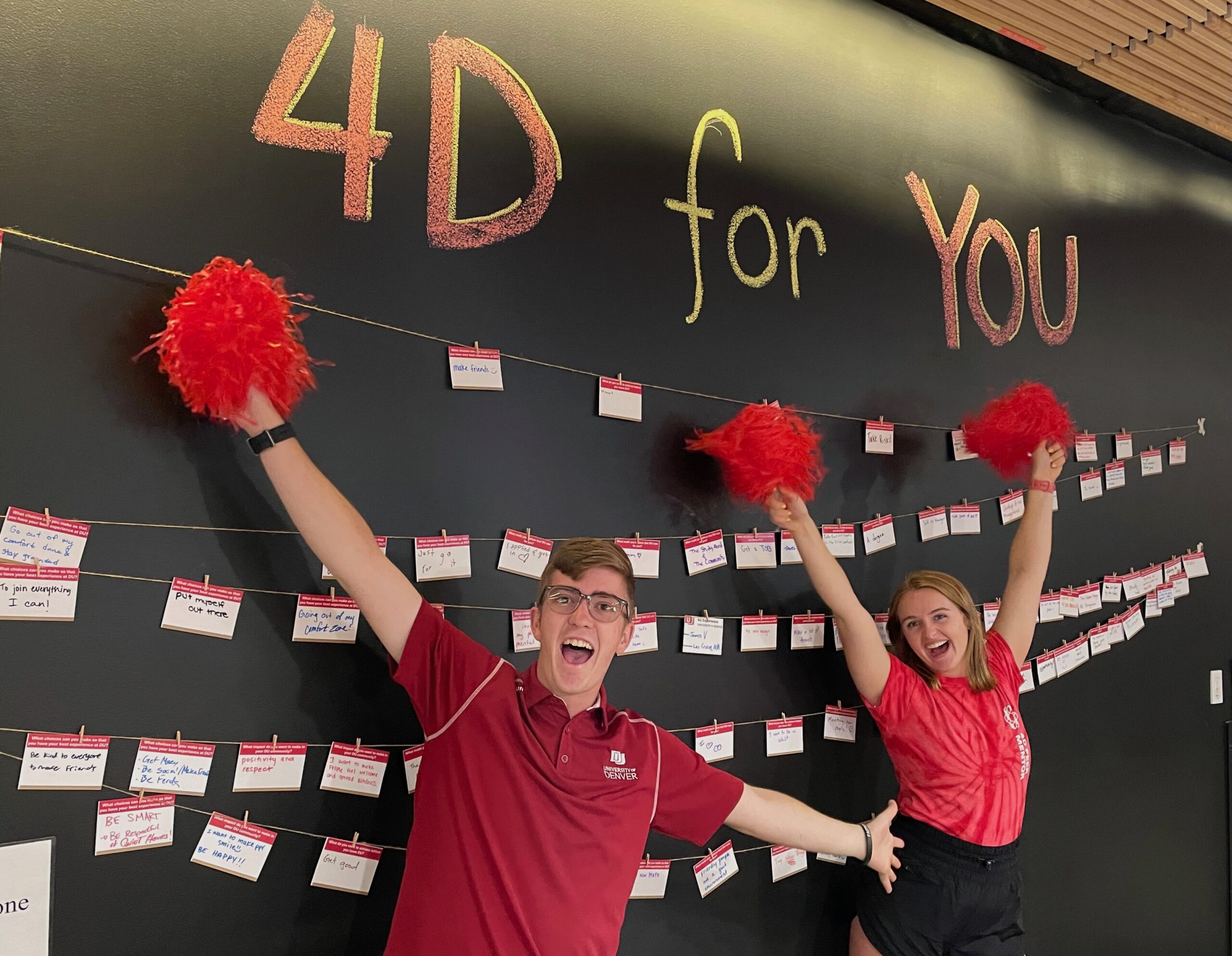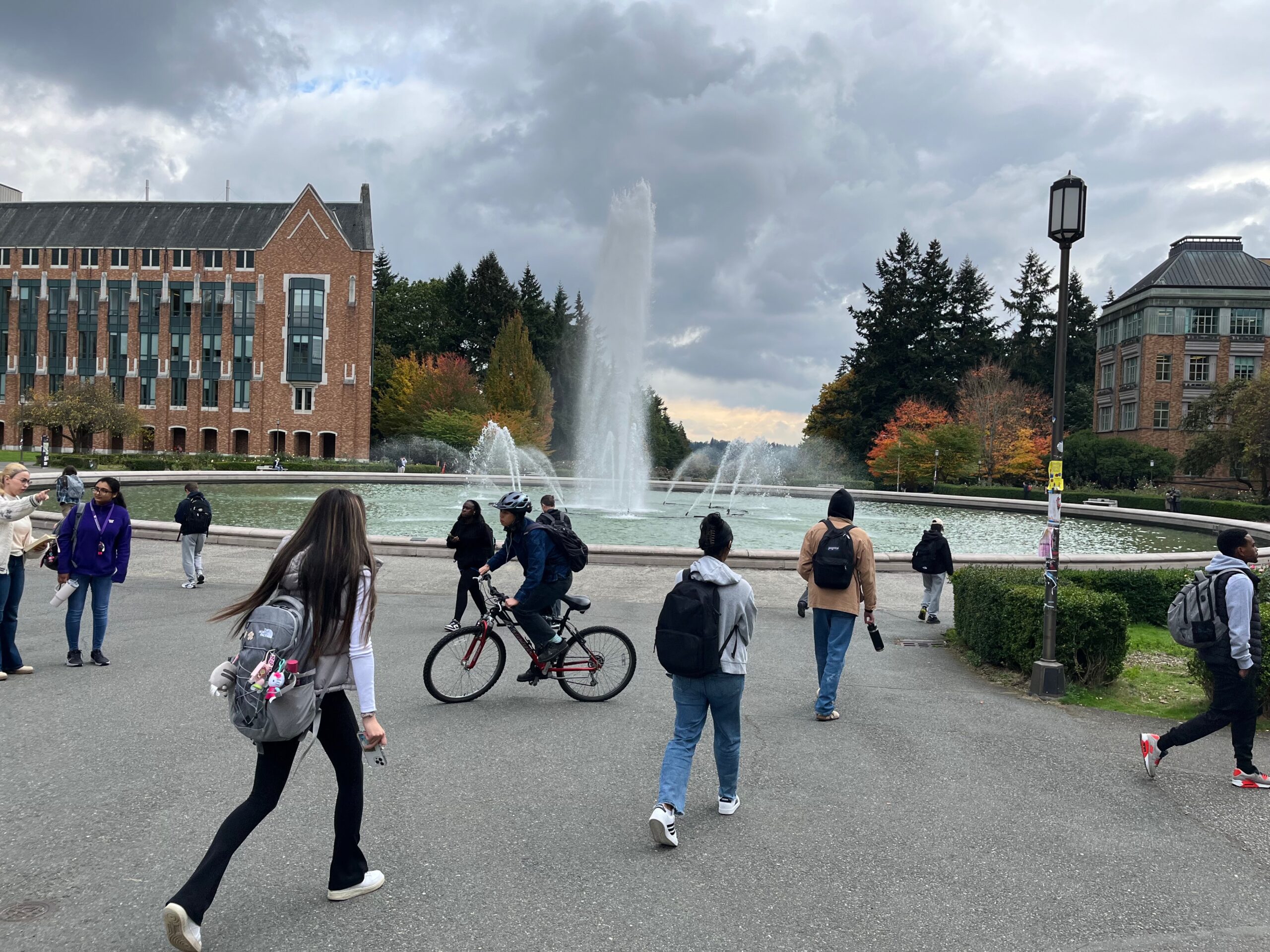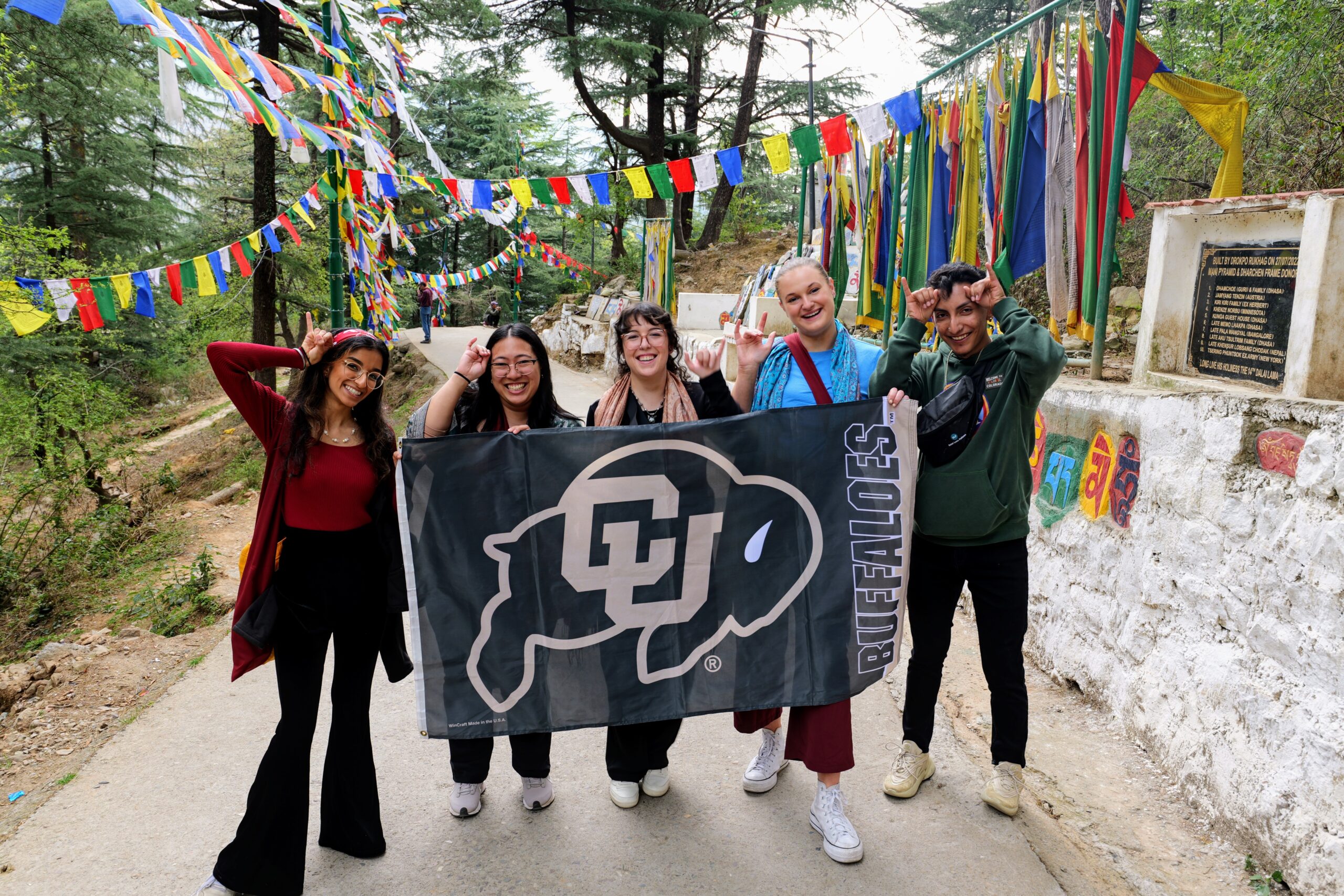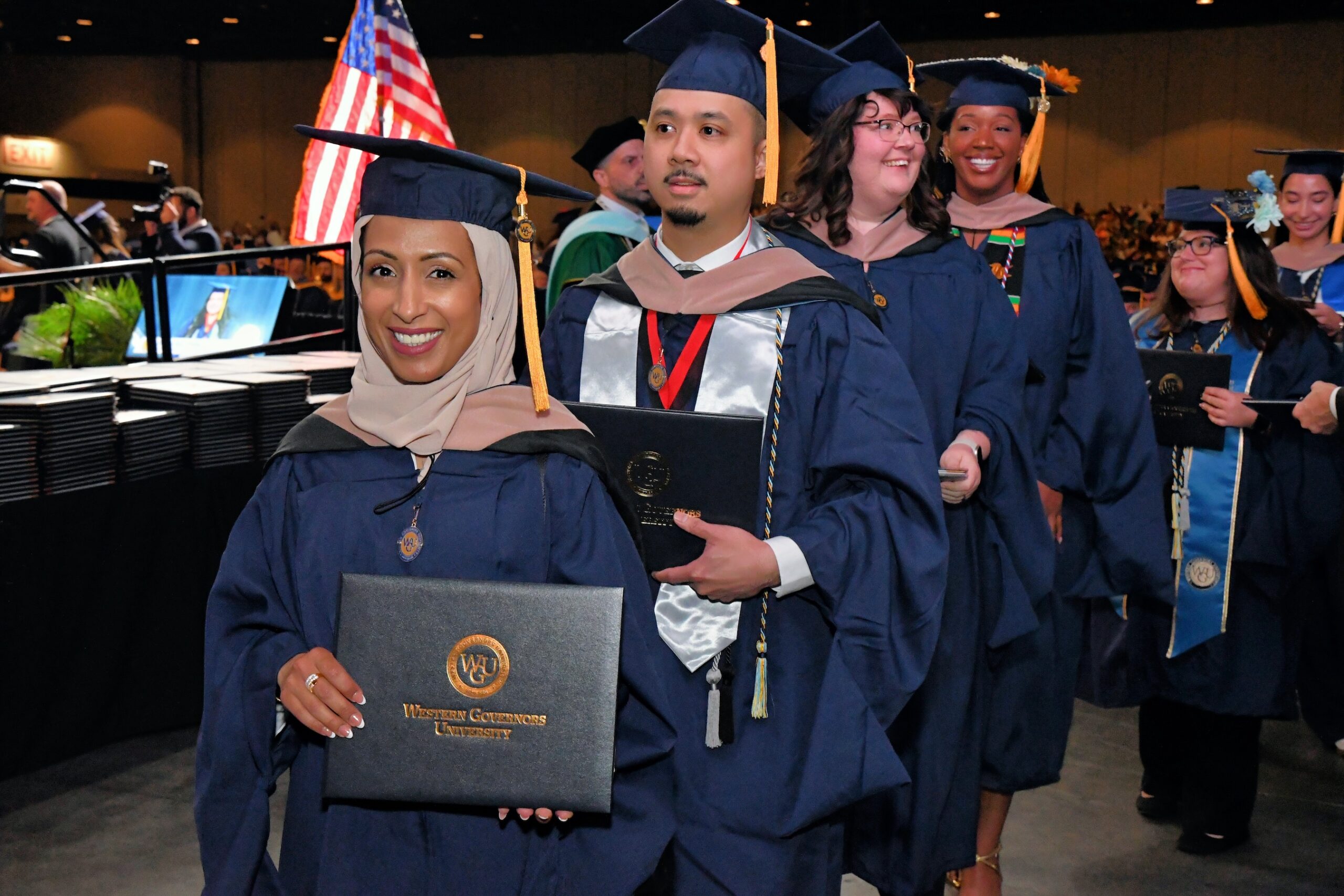When University of Denver (DU) was named Princeton Review’s #1 “school most loved by its students” this year, junior Libby Williamson was not surprised. She’d arrived as a freshman in 2021, when the school had recently added a student-centered learning pilot called the 4D Experience. One of the hallmarks of 4D is the peer mentor program, and that mentorship was one of the things that had made the campus feel so accessible and supportive during her first year. Today, that program is central to her own identification as a peer mentor and leader, and to her personal and professional development.
“I think 4D and its emphasis on mentorship is so valuable to the student experience,” says Williamson, a communications major. “It’s this holistic approach to a college education that focuses on more than just academics, prioritizing my growth as an individual and as a confident, well-rounded professional by the time I graduate.”
The pilot of the 4D Experience launched in fall 2020 as an educational philosophy of living and learning, both inside and outside the classroom, based on four dimensions of development. But to understand 4D, and its goals that are simultaneously lofty and practical, it helps to understand the social context. The University of Denver, like many other institutions, was facing the pressures of higher education in flux.
A Turning Point
When DU was designing its strategic future vision in 2016, the message was steeped in positivity: to affirm its strengths and engagement and expand upon them. But it was no small coincidence that the motivation to reconceive the school’s vision was coming at a time of larger challenges, and change.
The chancellor at the time, Rebecca Chopp, believed the university was ready for a turning point, an opportunity to evolve with a new vision within the larger storm brewing in higher education over a host of issues from cost and value to free speech. In 2014, the school’s Strategic Issues Panel published a report titled “Unsettling Times: Higher Education in an Era of Change.” It cited a growing list of perceived shortcomings in American higher education, from the rapidly rising cost of tuition to the alleged failure to provide a meaningful—or practical—education for students. “The report is intended to appropriately define the urgency of the moment,” states the opening letter from the panel’s leaders, “and also to stimulate the collective creativity of the academic community.”
The resulting strategic vision, DU Impact 2025, offered broad strokes for a rollout in a range of transformative directions. But it was the next chancellor—after Chopp’s tenure was cut short by illness—who nurtured the innovative shape this transformation would take.
In 2021, Chancellor Jeremy Haefner described the 4D vision this way: “DU is rebooting the student experience by retaining the engagement students yearn for while being intentional about the skills they need to build lives of purpose.”
Through a holistic approach to learning and personal development, the 4D Experience identifies four interconnected dimensions for student evolution: intellectual growth, purpose-driven careers, well-being, and character exploration.
Laura Perille, Executive Director of the 4D Experience, collaborated with campus partners to create a taxonomy and build out what these dimensions would mean. “What are the habits of thinking and doing associated with each of these dimensions to help people understand how they were already mapping to this work in their pedagogy and practice, but then also initiate conversations around, how can we further advance this work?” she says.
The program challenges conventional achievement-based educational models by prioritizing reflection, mentorship, and practical application alongside academic prowess—noteworthy, for a R1-ranked doctoral institution. Through its innovative framework, DU nurtures graduates to emerge equipped not only for professional success but for meaningful and fulfilling lives. With an intentional, co-curricular environment, the 4D Experience guides students to connect the dots of passion and purpose, building their educational pathways alongside mentors. Those mentors, advisors, and peers become a new student’s “constellation of support,” based on their unique interests, needs, and goals.
“Why a holistic, 4D experience? Because we want our students to have lives of purpose and careers of fulfillment, and we want them to be servants of the public good,” wrote Chancellor Haefner in his Spring 2021 message. “But the world is complicated. Climate change, increasing wealth inequity and injustice are pervasive challenges. Students need more than just a great intellectual and academic journey; they also need experiences from which they can build comprehensive life skills. This is what the 4D experience aspires to deliver.”
1. Advancing Intellectual Growth
At the heart of the 4D Experience is the belief that intellectual growth is more than a measure of academic performance. It is about fostering curiosity, critical thinking, and interdisciplinary connections that prepare students to navigate complex global challenges.
DU’s First-Year Seminar (FSEM) program was an existing program and opportune environment to introduce 4D, and this dimension. These small, topic-focused seminars are designed to ease new students’ transition into college-level learning while encouraging them to think deeply about their goals and values. Heather Martin, a Writing Program instructor and FSEM faculty member, has reimagined her course to align with the new 4D framework. This approach encourages students to connect their academic pursuits with broader life questions with intention from day one.
“My seminar focuses on transitions, both personal and academic. We use texts like Bruce Feiler’s Life Is in the Transitions and Stanford’s Designing Your Life to think about how we experience transitions,” Martin explained. “What are ways we can reflect and process our transitions and be intentional going forward? It’s a real complement to how we welcome students into the DU community. And it also sets up the conversations that will be incorporated in the course content in different ways throughout the campus.”
One of the tools DU employs to enhance intellectual growth is the e-portfolio system. Students create digital portfolios that document their learning, track their progress across disciplines, and showcase their academic achievements. They can be shared with faculty for assessments and provide a platform to display their skills to an external audience, such as a job interviewer. The portfolios encourage students to see their education as a whole rather than a collection of disconnected courses. “It’s integrated learning framed around the four dimensional experience as buckets to integrate learning,” says Martin. “It’s really exciting to see them thinking with more intentionality about their college experience.”
The program challenges conventional achievement-based educational models by prioritizing reflection, mentorship, and practical application alongside academic prowess.
Beyond the classroom, DU offers a range of high-impact practices designed to deepen intellectual engagement. Internships, research opportunities, and study abroad programs enable students to apply their learning in real-world contexts. “Across the arc of educational experiences, we look at the kinds of moments that may already be pre-existing, where we can build out additional touch points that are engaging students in conversations about practical applications of their studies,” says Perille.
DU’s commitment to intellectual growth extends to its faculty as well. Professional development workshops provide instructors with tools to incorporate reflective practices and interdisciplinary learning into their teaching, and Infusion Grants support faculty and staff with seed funding for projects that enhance the 4D Experience of DU undergraduate or graduate students. “It seemed disingenuous to talk about student thriving without recognizing that faculty and staff are responsible for delivering these kinds of high impact experiences,” says Perille.
2. Pursuing Careers and Lives of Purpose
The second pillar of the 4D Experience prepares students for purposeful and fulfilling careers. By aligning academic learning with professional aspirations, DU ensures that graduates are equipped to navigate the complexities of the modern workforce. But first, it helps students reflect on their interests and values, guiding them to choose majors and career paths that align with their passions.
The Major + Career Exploration Lab, for example, is a quarterly session open to all students to help them discover strategies for matching their interests and values to potential careers, then determining the major that will best set them on that path. Are you unsure what you want to major in? asks the signup page for the event. Have you declared a major but want to confirm that it’s truly for you?
“We encourage students to think about their ‘why’—what motivates them and how they want to contribute to the world. What are the issues that animate you? What do you find yourself drawn to engage in?” Perille says. “We’re getting them to actually think about their ‘why’ as the driving force of thinking about potential careers and majors.”
When Williamson thought about what drew her engagement on campus, she targeted her experiences as a peer mentor and student coordinator. Those roles have given her valuable skills that have fueled her thinking about careers, including possibly working in higher education. “These roles have taught me leadership, organization, and problem-solving—all of which are transferable to the professional world, whatever I end up choosing to do,” she said.
DU also integrates purpose-driven learning into student employment. Through the 4D Reflective Supervision Model, supervisors help student employees connect their campus work to their broader educational and career goals. This intentional approach ensures that even part-time jobs become meaningful learning experiences. Internships, co-op programs, and community engagement opportunities further enhance students’ career readiness. These experiences provide hands-on learning while helping students build networks and explore potential career paths.
This emphasis on purpose-driven careers aligns with broader trends in education and employment, where adaptability, creativity, and emotional intelligence are increasingly valued. It also serves as DU’s answer to contemporary critics of American higher education by creating a more direct link and intentional link between areas of interest, areas of experience, choice of major, and applications of all three in the workforce.
3 Promoting Well-Being
The 4D Experience prioritizes a culture of compassion, making mental, physical, and emotional health essential components of student development alongside academic and professional success. DU built in access to resources students need to thrive, from counseling services and wellness workshops to programs in meditation, fitness, and stress management.
Faculty members like Martin also address well-being in their classrooms. “We talk openly about thriving—what it looks like, how to achieve it, and how to sustain it,” she said. By normalizing these conversations, DU reduces the stigma around mental health and fosters a supportive campus culture—and makes it less surprising when 4D topics arise in core classes. “I think sometimes it can be challenging for students who are high achieving, and they’re accustomed to a certain model of learning that they’re really good at,” she says. “I’m pushing them to think a little bit outside of that previous experience.”
In addition to being a source of academic support, peer mentors are trained to be personal and professional sources of support, and to recognize signs of stress or burnout. On the national level, peer mentorship has been linked to positively impacting student outcomes and addressing systemic barriers to success, and programs are on the rise. Just last month, the Association of Public and Land-Grant Universities (APLU) launched a mentorship initiative, designed to support APLU member universities in developing and implementing sustainable peer mentorship models using technology-enabled solutions.
The university has also developed initiatives to support faculty and staff, recognizing that their well-being is essential to creating a thriving campus community. Workshops on topics such as compassion, collaboration, and stress management provide employees with tools to care for themselves and others.
4 Exploring Character
Character exploration is a vital dimension of the 4D Experience, encouraging students to reflect on their values, develop resilience, and cultivate a sense of purpose while navigating the complexities of modern life with integrity.
DU’s Kennedy Mountain Campus is a unique asset in the university’s toolbox that provides students a place to go—up into the woods—for targeted learning and personal character development outside the classroom. The 724-acre property, a gift from a donor, had previously been the largest Girl Scout camp in Colorado. Now part of DU’s facilities, the Kennedy Mountain Campus is home to the First Ascent Program, an immersive weekend retreat for first-year students that challenges them to step outside their comfort zones and reflect on what matters most to them. The Mountain Campus bordering Roosevelt National Forest offers opportunities for hiking, mindfulness, and community-building, encouraging students to recharge and reflect, strengthening their overall resilience, and connecting with their peers on a deeper level.
In academic settings, character exploration is woven into courses like Martin’s FSEM seminar, which includes reflective writing assignments on topics such as personal values and life philosophy. “The 4D framework makes it easier to bring these discussions into the classroom,” Martin said. “It helps students see the connections between their academic learning and their personal growth.”
Character development is also a dimension that grows out of the mentorship program. Libby Williamson, a junior and peer mentor, was so inspired by her experience, and having absorbed the character modeling by her mentor, that she applied to become a mentor herself, and eventually rose to the role of student coordinator. Mentoring peers, she explains, requires a unique set of skills. “It’s not just about giving advice—it’s about building trust and having meaningful conversations. You’re helping someone discover their own solutions rather than handing them answers.” The mentorship program also provides a space for students to develop leadership, with training in communication, conflict resolution, and emotional intelligence, all of which contribute to their personal and professional growth. For Williamson, these experiences have been transformative: “Mentoring has taught me so much about empathy, patience, and the importance of listening.”
Thinking Today about the Student of the Future
When Perille and others worked to build out the 4D Experience from its pilot stage, they wanted to make sure it reached across all sectors of the campus, and that it be more than a program—something more ingrained, as a shared philosophy.
“We were always thinking, how do we do this at scale in a way that doesn’t exist just in one program, but becomes part of the ethos of the institution? How are we advancing culture change in this vein of holistic student learning and development?” she recalls.
One goal is to generate widespread buy-in, creating a shared language. That would indicate more than a collection of people participating in a program; it would be a community creating a prototype for the student of the future.
“Ultimately, I would say my role is more than curriculum, or education,” says Perille. “It’s one of change management.”









